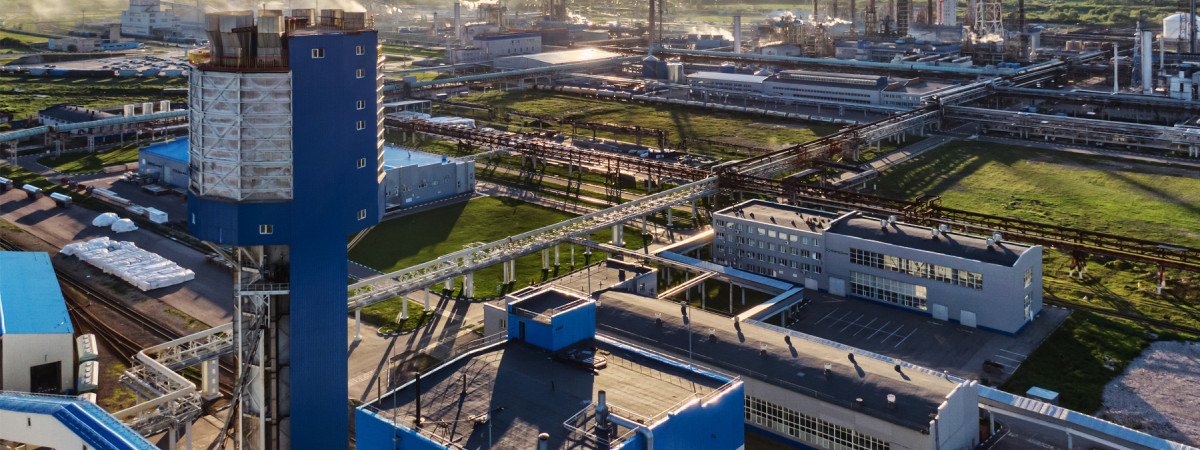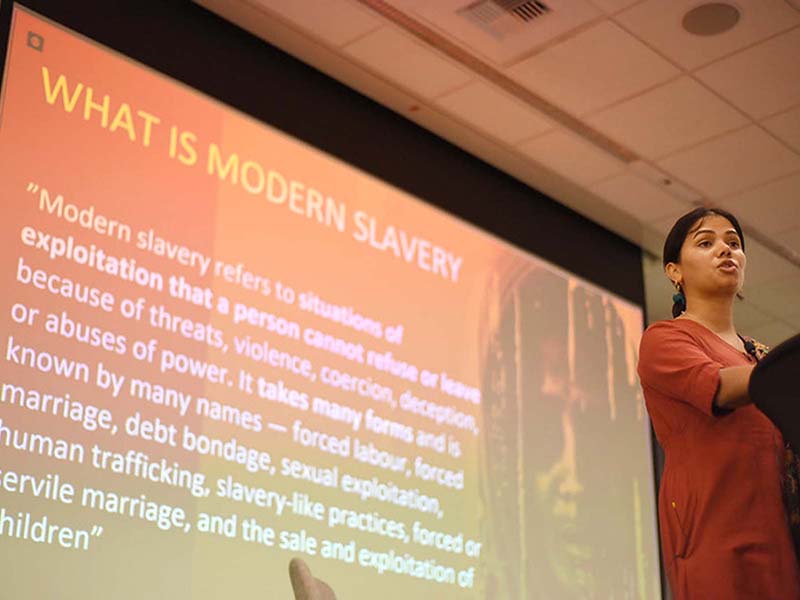
Photo by Elena Bionysheva-Abramova on iStock
Authors
-
Kelly Scott
Former Manager, Human Rights, BSR
-

Manager, Human Rights, BSR
-
Anna Iles
Former Associate Director, Transformation, BSR
Key Points
- In the US, the Department of Labor reported that child labor violations have increased by 70% since 2018.
- Companies must navigate a complex regulatory landscape, with differing approaches across regions, as well as increased scrutiny to counter weakened protections.
- BSR’s Human Rights team provides key recommendations on how businesses can adopt and implement clear policies that prohibit the use of child labor.
Child labor is on the rise across the world, with increasing incidence in wealthier nations, challenging the common assumption that it is primarily an emerging economy concern. Workforce shortages, migration patterns (including the increasing presence of undocumented workers and their children) conflict, and weakening regulations around child labor—particularly in the US—are all contributing to the rising exploitation of underage workers in high-income countries. This is especially true for industries that rely on low-skilled and flexible labor, including manufacturing, agriculture, and automotives, among others.
In the US, the Department of Labor (US DOL) reported that child labor violations have increased by 70% since 2018. Instances of child labor violations have been uncovered both in the supply chains of agriculture and meat processing facilities in the US, as well as in front-of-house positions within fast food restaurants. Meanwhile, at least 10 states have passed laws to weaken child labor standards in the last two years—including extending working hours and eliminating work permits for teenagers. Migrant and undocumented children are among the most vulnerable: the U.S recently opened investigations into Tyson Foods and Perdue Farms for child labor violations alleging that contractors working for the companies hired migrant children.
Children are increasingly used to fill labor gaps, with migrant and undocumented children particularly vulnerable to exploitation. Outside the US, Australian food companies are also facing allegations of breaking child labor laws, while a café reportedly hired 11-year-old children to address labor shortages. In Russia, there are movements to ease child labor laws and regulations to help the country fill workforce gaps left by the war with Ukraine, which has also exacerbated risks.
Adverse Impacts of Child Labor
Child labor refers to work that is dangerous, excessive, or harmful to children, including mental and physical well-being. According to UNICEF, many child laborers are subjected to long working hours, hazardous working environments, physical injuries, and mental, emotional and developmental health impacts making even them more vulnerable to trafficking and abuse.
In addition to jeopardizing children’s health, safety and development, child labor can have long-term impacts on families and communities. According to the ILO, more than 25% of children aged 5 to 11 and over 33% of children aged 12 to 14 who are in child labor do not go to school. By disrupting or ending schooling, child labor limits future work and economic opportunities, increasing income inequality over generations.
Implications for Business
Child labor is a violation of international human rights and labor rights laws and standards. Businesses that employ children or have child labor in their supply chains—including those in high-income countries—face reputational damage, compliance and legal risks. According to the US Labor Department, there has been an 87% increase in fines on employers in recent months, and companies across the country have been hit with $6.6 million in penalties for child labor violations.
Companies must navigate a complex regulatory landscape, with differing approaches to regulations across regions—and within countries – as well as increased scrutiny to counter weakened protections. In the US, companies may be caught between conflicting State and Federal laws. Amidst weakening regulations at the State level, the US federal government has taken steps to intensify labor investigations. The USDA has responded by increasing efforts to combat child labor in the meatpacking industry, while the Fair Labor Standards Act (FLSA) plays a crucial role in regulating and protecting workers' rights in these circumstances. Similarly, in Australia, the federal government has engaged in a new pledge to ‘stamp it out’ with similar calls in New Zealand.
While there are movements within some countries to reduce protection for children in the workforce, other countries and regions are taking a strong stance against child labor and requiring companies to eliminate the practice from their operations and supply chains.
In the United Kingdom, there have been calls from the All-Party Parliamentary Group on Street Children in June 2023 to outlaw child labor entirely. In Canada, the House of Commons has passed a bill aimed at tackling forced and child labor; however, critics argue that corporations still find ways to evade meaningful accountability. At the regional level, the EU has adopted a zero-tolerance policy on child labor in its new trade agreements and has implemented an EU Strategy on the Rights of the Child to further protect children's rights. At the global level, the ILO has set minimum age requirements for work and states that 15 years is the minimum age for work (13 for light work), while hazardous work is only permitted for individuals aged 18 or 16 under certain strict conditions.
Child labor also has long-term impacts that could make the operating environment for business more challenging in the future. In underregulated areas, procurement teams may find it difficult to determine whether possible new suppliers or business partners have child labor in their operations or their own supply chains, which could trigger new and emerging human rights and modern slavery reporting requirements. Additionally, by exacerbating existing social inequalities, child labor can reduce the earning potential of already disadvantaged groups, which can prompt the decline of a diverse and skilled workforce.
Online activities, not yet covered by child labor laws, further complicate the regulatory landscape for business. A new law in Illinois introduces the first protections in the US for Child Influencers, or children with large social media followings, entitling under-16s to a proportion of earnings from social media posts.
What can businesses do?
-
Adopt and implement clear corporate policies that prohibit the use of child labor and set out expectations for ethical business for suppliers and business partners.
-
Conduct human rights due diligence to determine how certain factors may increase risks of child labor in their own operations or supply chains, including increased migration, economic downturns, and conflict. Companies in high-risk sectors can also conduct enhanced human rights due diligence and specific child rights risk assessments.
-
Engage suppliers by awareness-raising, training, and capacity building to prevent, identify and address child labor, including understanding the root causes. Companies should also train and monitor supplier subcontractors and recruitment agencies.
-
Provide decent work opportunities, including traineeships and apprenticeships, to young workers and adolescents while equipping them with relevant skills needed to prepare for the future workforce.
-
Collaborate with peers, industry, business across different sectors, and suppliers to jointly address systemic risks of child labor and other forms of modern slavery. The Global Business Coalition Against Human Trafficking (GBCAT), for example, aims to scale business action to prevent modern slavery, including child labor, through supplier capacity building, survivor empowerment and employment, leveraging technology solutions to fight human trafficking, and addressing the misuse of technology to facilitate crime.
-
Where possible, work with relevant stakeholders to advocate for strengthening legislation to protect against child labor violations.
-
While companies should, at a minimum, comply with national laws and regulations, they should always adhere to the highest standard (as enshrined in international laws, standards, and regulations).
-
Publish and report risk assessment findings (including in operations and supply chains) to help increase industry transparency around risks and root causes and demonstrate actions that are being taken to prevent, identify and address child labor.
-
Collaborate with relevant stakeholders to provide appropriate remediation where child labor is identified on a case-by-case basis. This also includes requiring suppliers to have a robust remediation plan.
Debate and leadership are required to ensure child protections are fit for a changing world, and not to jeopardize tomorrow’s workforce for short-term gain. Contact us to understand how your company can lead within an increasingly complex and fragmented global human rights landscape.
BSR’s latest sustainability insights and events straight to your inbox.
Topics
Let’s talk about how BSR can help you to transform your business and achieve your sustainability goals.







